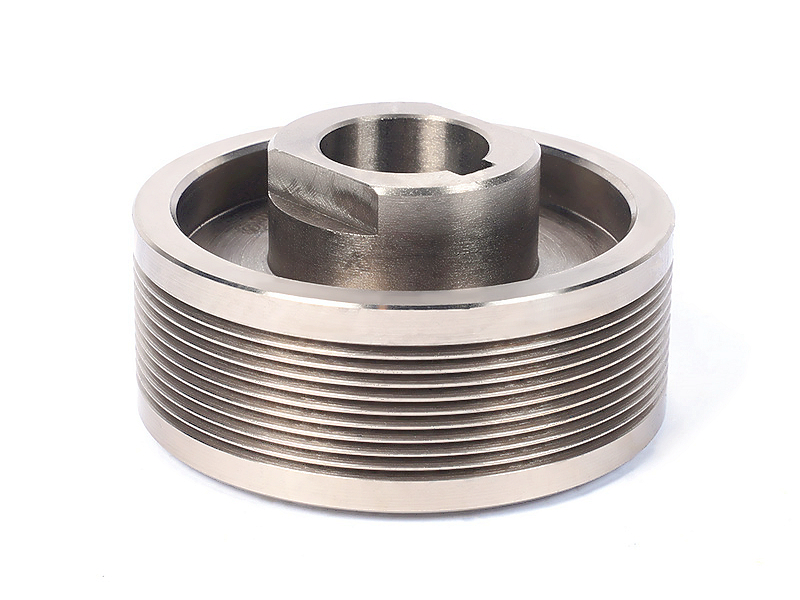Copper and Brass CNC Boring: Enhancing Heat Transfer Efficiency in Oil and Gas Equipment
Introduction
In the Oil and Gas industry, efficient heat transfer is crucial for safe and optimal equipment operation. Copper and brass components, known for superior thermal conductivity, corrosion resistance, and machinability, are extensively used in heat exchangers, valves, cooling systems, and specialized fittings.
Advanced CNC boring services provide precise internal dimensions, superior surface finishes, and accurate alignment required for optimizing heat transfer efficiency. Mastering CNC boring techniques in copper and brass significantly boosts critical oil and gas components' operational reliability and thermal performance.
Copper and Brass Materials for Oil & Gas
Material Performance Comparison
Alloy | Tensile Strength (MPa) | Yield Strength (MPa) | Thermal Conductivity (W/m·K) | Typical Oil & Gas Uses | Advantage |
|---|---|---|---|---|---|
220-260 | 70-150 | 390 | Heat exchangers, cooling coils | Excellent thermal conductivity, corrosion resistance | |
965-1170 | 655-790 | 130 | Valves, connectors, precision fittings | High strength, superior fatigue resistance | |
345-395 | 120-150 | 115 | Valve components, fittings | Exceptional machinability, corrosion resistance | |
400-500 | 140-240 | 110 | Pump components, marine valves | Strong corrosion resistance, excellent durability |
Material Selection Strategy
Selecting the optimal copper or brass alloy for CNC boring applications involves assessing specific heat transfer and mechanical requirements:
Components demanding maximum thermal efficiency, such as heat exchangers and cooling systems: Copper C110 (TU0) delivers exceptional thermal conductivity.
Precision valves and high-stress fittings: Copper C172 (Beryllium Copper) provides outstanding strength and fatigue resistance.
Valve components and fittings prioritizing machinability and moderate strength: Brass C360 is ideal for efficient production.
Durable marine and corrosion-resistant components: Brass C464 (Naval Brass) ensures robust performance in harsh environments.
CNC Boring Processes
Process Performance Comparison
CNC Boring Technology | Diameter Range (mm) | Dimensional Accuracy (mm) | Typical Oil & Gas Uses | Key Advantages |
|---|---|---|---|---|
5-200 | ±0.005 | Heat exchanger components, valves | High accuracy, smooth internal surfaces | |
10-400 | ±0.01 | Complex connectors, manifold blocks | Versatile machining, complex internal geometries | |
50-600 | ±0.01 | Large valves, cooling system casings | Stability, precision on larger components | |
3-150 | ±0.003 | Precision fittings, sensor housings | Exceptional precision, minimal dimensional deviation |
Process Selection Strategy
The right CNC boring method ensures precise dimensions and optimized thermal performance in oil and gas equipment:
Precise internal channels in heat exchangers and valves: Precision CNC Boring ensures tight dimensional control and smooth finishes.
Components with intricate internal features: Multi-Axis CNC Boring provides efficiency and versatility in complex machining tasks.
Larger casings and high-capacity valves: Horizontal CNC Boring delivers stability and accuracy on substantial components.
Ultra-precision sensor housings and specialized fittings: CNC Jig Boring achieves unmatched precision and reliability.
Surface Treatment
Surface Treatment Performance
Treatment Method | Corrosion Resistance | Wear Resistance | Temperature Stability (°C) | Typical Oil & Gas Uses | Key Features |
|---|---|---|---|---|---|
Superior (≥1000 hrs ASTM B117) | High (HV600-750) | Up to 400 | Valve bodies, connectors | Uniform protective layer, enhanced durability | |
Excellent (≥600 hrs ASTM B117) | Moderate | Up to 350 | Internal fittings, valves | Improved corrosion resistance, surface cleanliness | |
Superior (≥1000 hrs ASTM B117) | High (HV2000-3000) | Up to 600 | Precision valve components | Exceptional hardness, wear protection | |
Good | Moderate | Up to 300 | Heat exchanger surfaces | Enhanced heat transfer, surface smoothness |
Surface Treatment Selection
Surface treatments significantly enhance the durability and efficiency of copper and brass oil and gas components:
Valves and connectors needing enhanced corrosion and wear resistance: Electroless Nickel Plating provides superior protection.
General-purpose fittings and internal components: Passivation ensures surface cleanliness and corrosion resistance.
High-wear precision components: PVD Coating dramatically improves durability and component lifespan.
Heat exchanger surfaces and critical thermal components: Polishing enhances thermal efficiency through smoother finishes.
Quality Control
Quality Control Procedures
Dimensional inspections using Coordinate Measuring Machines (CMM) and specialized bore gauges.
Surface roughness and hole accuracy validation via profilometry and optical inspection.
Mechanical property testing (tensile, yield strength) compliant with ASTM and industry standards.
Non-destructive testing (NDT), including ultrasonic (UT), radiographic (RT), and magnetic particle inspections (MPI).
Corrosion resistance assessment using ASTM B117 salt spray testing.
Comprehensive documentation and traceability following ISO 9001 and API Q1/Q2 quality standards.
Industry Applications
CNC Bored Copper and Brass Applications in Oil & Gas
Precision heat exchanger components.
Cooling system valves and connectors.
High-performance manifold blocks and fittings.
Corrosion-resistant marine valves and pump housings.
Related FAQs:
Why is CNC boring essential for copper and brass heat exchanger components?
Which copper alloy provides the best thermal conductivity for oil and gas applications?
How does precision CNC boring enhance heat transfer performance?
What surface treatments improve the durability of copper and brass components?
Which quality standards are critical for CNC bored oil and gas equipment?

